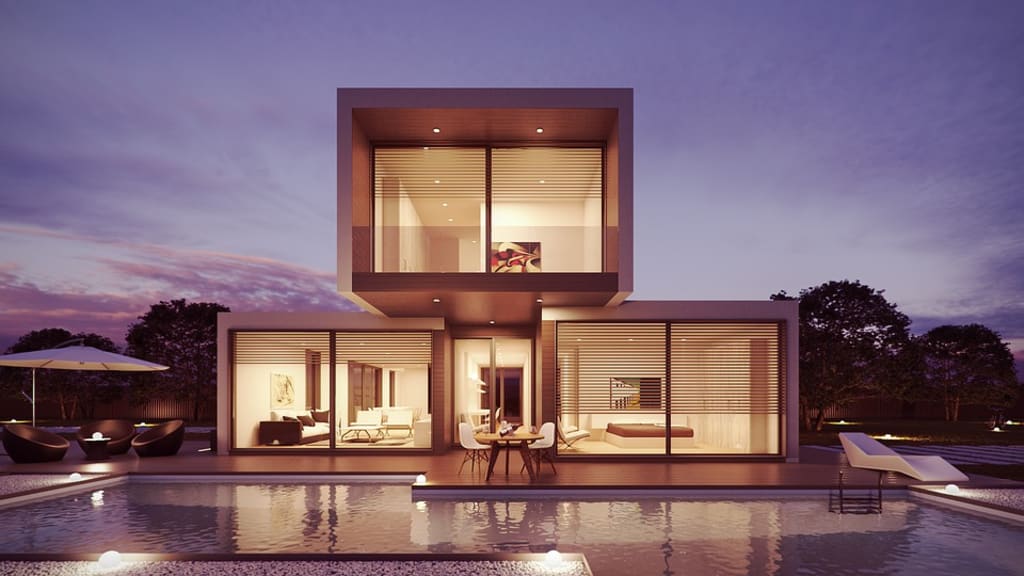How Science Fiction Will Influence the Future of Interior Design
The look of our homes is changing.

Science fiction has been a cultural phenomenon for decades now, impacting the landscape of our lives in numerous ways, from our terminology and the way we think to what we wear, what we drive, and where we live. From architecture to color schemes and room layouts to furniture design, there’s little doubt that sci-fi has been shaping the appearance of our living spaces.
The Impact of Sci-fi in the Modern Era
Before diving into taking an actual look at futurism within the context of interior design, let’s take a quick stroll through the past and see just how these sleek, simplistic modern trends developed in the first place.
The Early Rumblings
The infancy of sci-fi can be traced all the way back to writers like Jules Verne, George Orwell, and H.P. Lovecraft. The content of these writers was typically quite Earth-centric, though it often involved aliens, hidden worlds, and other physical and spatial phenomenon that served to lay the foundation for the sci-fi revolution that was to come.
Childhood
As the movement caught on, an initial slew of futuristic and dystopian writers began to arrive on the scene. These included the likes of H.G. Wells, Ray Bradbury, Isaac Asimov, and Aldous Huxley, all of whom began to build on what the previous generations had left them, widening the possibilities with many works like I, Robot,A Brave New World, and 1984. Some of these, such as The Martian Chronicles, even took many of the concepts right out of this world in the process.
Puberty
As the sci-fi hysteria grew in momentum, it began to adapt itself to dramatically different visual representations in television and movies. Star Trek, Star Wars, The Terminator, and even The Jetsons continued to develop many of the various sci-fi theories floating around, while their mainstream acceptance, right as the fledgling technological era was beginning to explode, began to impact society on a greater scale.
Adulthood
The modern era has seen both a general acceptance and a sense of normality come to the sci-fi landscape as trends from movies to technology, cars to clothing, and so much more have quickly adopted features that mirror many of the designs seen in the futuristic media of the era in which they’re made.
The Future of Sci-fi in Interior Design
How have these trends from the past affected our homes themselves? Let’s take a closer look.
The Foundation
Architecture has been greatly impacted by a century of sci-fi influence, with more and more buildings being built with an eye to futuristic trends. On the one hand, many buildings have adopted shiny, smooth appearances with gentle curves and an abundance of windows. On the other side of the “smooth and shiny” coin is the Cyberpunk look, a trend that found its initial mainstream expression back in the 80s with films like Blade Runner. It often involves hard, unforgiving lines, unimaginative concrete, and a straightforward, blocky feel that screams utilitarian. Cyberpunk—or “Hard Concrete” as some call it—delivers a cold and calculating influence to our modern design trends, even if many of its harsher edges have been softened over the years as it has been melded with other, gentler designs.
Minimalism
One of the biggest modern interior design trends that finds much of its inspiration in sci-fi is minimalism. This has been on full display in examples like the bridge of the Starship Enterprise from Star Trek, with the old versions coming replete with buttons, nobs, and flashy screens, while the newer models find much more inspiration in clean, smooth panels with hidden touch-screen buttons. This same movement towards minimalism can also be seen on many of the sets in Netflix’s smash sci-fi thriller Black Mirror, which often features very sparse spaces, with muted whites, blacks, and grays playing prominent roles in the color scheme.
Of course, in and of itself, minimalism doesn’t get you much in the way of interior design. But, it forces us to use thoughtful consideration in what we do choose to include in our spaces.
The Shiny Look and the Industrial Effect
Shiny, glossy surfaces are a clear side effect of the simplistic sci-fi sets that have been so common in recent decades. In addition to this, from coffee shops to apartments and homes, the simple industrial look is fast becoming the norm. Apple storefronts are an excellent example of how this trend has even infiltrated our selling spaces. The recycled, under-adorned industrial trend is even making its mark in modern art.
Going Beyond the Physical
As we’ve become accustomed to concepts like space travel along with being surrounded by technology in general, the sci-fi world has begun to push more boundaries than simply space. Time travel, AI, and apocalyptic scenarios (often linked to very real, current potential threats like environmental disasters, weapons of mass destruction, or unstoppable contaminations and epidemics) have taken center stage in modern media. This has been depicted in movies like The Hunger Games anthology, The Walking Dead, or Ex Machina.
While the effects of this kind of sci-fi are much less tangible, they only serve to continue reinforcing that minimalistic, simplistic style that focuses less on the flash and glamor, instead coupling a clean, orderly space with the pursuit of the deeper meanings of life.
The Ever-Evolving Future
From interior design to education and beyond, the future has a lot in store, with change being the only factor we can count on. This goes for our living spaces as much as anything else. With interior design always reinventing itself, the impact of science fiction will certainly continue providing many more twists and turns in our living spaces in the future. Buckle up—it’s going to be a wild ride!
About the Creator
Ainsley Lawrence
Ainsley Lawrence is a writer who loves to talk about good health, balanced life, and better living through technology. She is frequently lost in a good book.







Comments
There are no comments for this story
Be the first to respond and start the conversation.